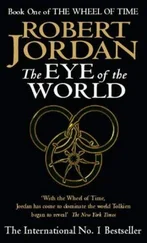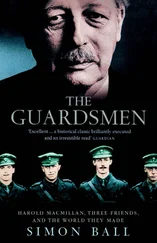Blagden spoke with Thompson who expected Au in Portsmouth – ‘everything seems well settled,’ Blagden assured Banks.[60] Banks now drew up his promised ‘Instructions’. The document detailed every aspect of Au’s substantial task: if he found signs of agriculture, he was to report on the nature of the soil, the tools and manure used, and the crops harvested; he was to collect specimens of everything that was cultivated; he was to describe the topography, the water quality, the forests, and take samples of every living botanical specimen, flowers, fruits, roots and seeds. And, without detracting from this objective, he was ‘to collect such seeds as he shall find ripe or bulbous roots as he may dig up which on his return home may furnish the Royal Gardens at Kew with something valuable to that magnificent collection’.[61] There is no doubt that Banks had high hopes for this mission. The settlement of convicts was not his aim – that was the government’s business: appropriating the natural history of somewhere new was, and he relished the anticipated results.
HMS Grampus and HMS Nautilus sailed for Africa on 28 September 1785. Au was on board but not under that name. Both the instructions drawn up for him and his entry in the ship’s muster announced a change of name: the man whose education, according to Blagden, far surpassed his station in life was now known as Antoni, and then Anthony Pantaleon Howe – it wouldn’t be the last time he changed his name.[62]
By the turn of the year the two ships were nearing the point where they would separate. Then disaster struck. On 16 January 1786, Commodore Thompson suddenly became very ill and died the very next day. George Tripp, the second-in-command, took over the Grampus and with it charge of the Africa station. The command of HMS Nautilus fell to the nineteen-year-old Thomas Boulden Thompson, the late Commodore’s ‘nephew’ and heir.[63]
On 2 February, the two ships parted as planned. The voyage to southwest Africa now began and it proved to be long and dull but, finally, on 21 March 1786, the ship arrived in St Helena Bay, about 150 kilometres to the north of Cape Town. The plan was to survey the coast northward from this point, including finding Das Voltas Bay, whose precise location was disputed.
It didn’t begin well and it continued badly. On 11 April they found Das Voltas Bay but the soil looked barren and dry. On 27 April they entered Walvis Bay and met four local people whose homes, located some way inland, looked poverty-stricken, more like huts than houses: they resembled, Thompson remarked, ‘the halves of bee hives, with the backs to the wind’.[64] It was all too depressing and on 17 May, Thompson decided that he had seen enough and took the Nautilus to the west heading for the island of St Helena, leaving the African coast for good. His terse comments in his journal on that day said it all: ‘completed the Survey of the Coast from Lat 32.47.47 S. to 16.0.0 S. without finding a Drop of fresh Water or seeing a Tree’.[65]
HMS Nautilus was back in Spithead on 23 July 1786. Immediately Thompson went to London to see Lord Sydney. Over a period of three weeks, the two men discussed the voyage and Thompson’s conclusions.[66] Sydney would have found the disappointing news painful. The government had invested so much in the hope of a settlement in southwest Africa and now it was over.[67]
A settlement at Das Voltas was deemed impossible and a substitute place was desperately needed. There were at least 1300 felons on hulks who had been sentenced to transportation and they needed to be moved.[68] On 18 August, Lord Sydney wrote a letter to the Treasury. The report of the officers of the Nautilus , he remarked, concluded that ‘the coast [was] sandy and barren, and from other Causes unfit for a settlement.’ He then went on: ‘His Majesty has thought it advisable to fix on Botany Bay situated on the coast of New South Wales.’[69] Banks was not mentioned by name as recommending the destination, but, incorrectly, Cook was.
There was no need for a survey. Cook had already done that when the Endeavour was on the coast. Events moved very quickly. By the end of the month Lord Sydney had informed the Admiralty of the decision and of the King’s command that a warship and a tender should be prepared to accompany a fleet of ships carrying 750 convicts to Botany Bay. A month after that, the Admiralty confirmed that they had ordered two ships to be fitted and that the lead ship, HMS Sirius , would be under the command of Captain Arthur Phillip.[70]
The newspapers were soon on to the story.[71] Botany Bay and transportation became inseparably linked.[72] The Europeanisation of Australia would now begin.
Anthony Pantaleon Howe had returned with a collection of seeds from some of the places HMS Nautilus anchored.[73] They went to Kew. Though it was not a voluminous collection, Banks was pleased with the way Howe had conducted himself.
Howe would soon be sent on another, and much more, daring mission.
3
1780: The First Circumnavigation of Archibald Menzies
A little before Banks became involved in the potential location of penal colonies, he had been focusing on the Pacific Northwest. It began with the fur trade, in particular the pelt of the sea otter, but, as usual, Banks saw an opportunity for collecting plants.
On 7 October 1780, the Resolution and the Discovery , the ships of Cook’s third Pacific voyage, anchored in Deptford, after a four-year voyage to find a passage linking the Atlantic and Pacific Oceans. The trip had been a disaster: no passage was found, Cook was killed in a skirmish on Hawaii on 14 February 1779, and his successor, Charles Clerke, had died on the return voyage.
The tragic news of Cook’s death had travelled overland across Russia to reach London many months before the return of the ships.[1] John Montagu, the 4th Earl of Sandwich and First Lord of the Admiralty, was nominally responsible both for the expedition and for the publication of its narrative. Whatever enthusiasm he may have had for the expedition, he lacked any for the publication and, no sooner had the ships docked, than he was in touch with Banks hoping for help. Montagu had all the journals of the voyage to hand but, as he told Banks, ‘I had so much trouble about the publication of the last two voyages, that I am cautious or rather unwilling to take upon me to decide in what manner & for whose emolument the work shall be undertaken.’[2] Banks immediately came to his aid and wrote to James King, who had taken command of HMS Discovery after Clerke died, asking him to write the narrative. King was delighted to accept and thereby came under the patronage of Banks, someone he admired and whom he referred to as ‘the common Center of we discoverers’.[3]
Until the ships returned, no one in London had any detailed knowledge of the expedition’s proceedings. It was all in the logs and journals, which had only arrived with the ships and would now be put at King’s disposal and, by extension, at that of Banks, who was in overall charge of the publishing project.
At some point during the writing of the narrative Banks must have learned, either by reading it in draft form or hearing of it from King, that during April 1778, while the Resolution and the Discovery lay at anchor in Nootka Sound (the indigenous name which Cook renamed King George’s Sound), Vancouver Island, the ships’ company, officers and crew alike, were treated to an unusual sight. Cook noted in his journal that no sooner had they entered the bay than they were surrounded by canoes filled with furs of various animals but, in particular, those of what Cook called the ‘sea beaver’ (but which we know as the sea otter). The indigenous people were there to trade and seemed to know what they were about and what they wanted. ‘For these things’, Cook remarked, ‘they took in exchange, Knives, chisels, pieces of iron & Tin, nails, Buttons, or any kind of metal. Beads they were not fond of and cloth of all kinds they rejected.’[4]
Читать дальше












